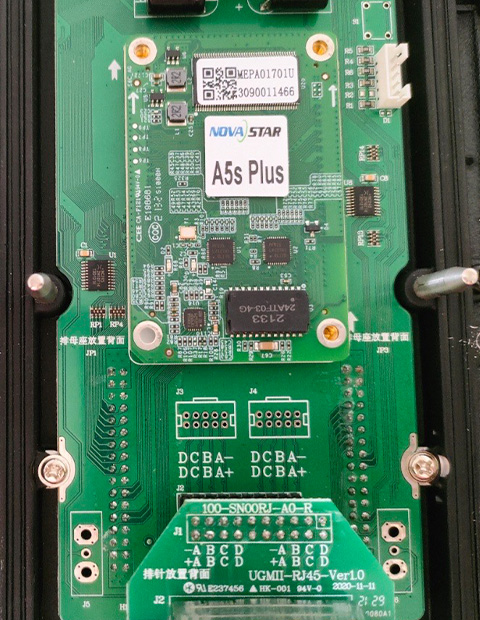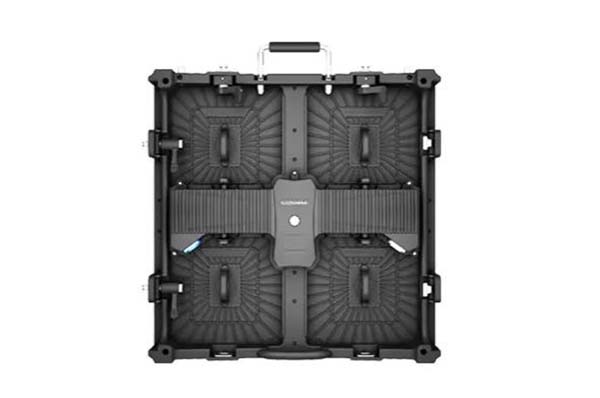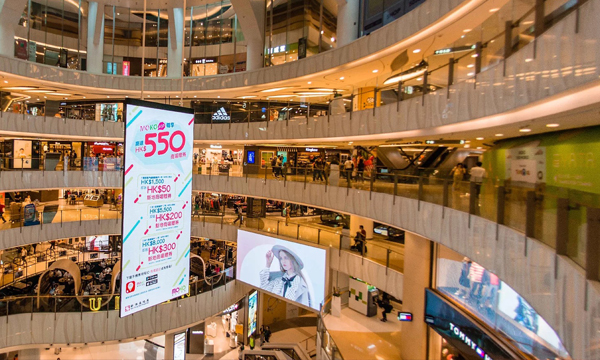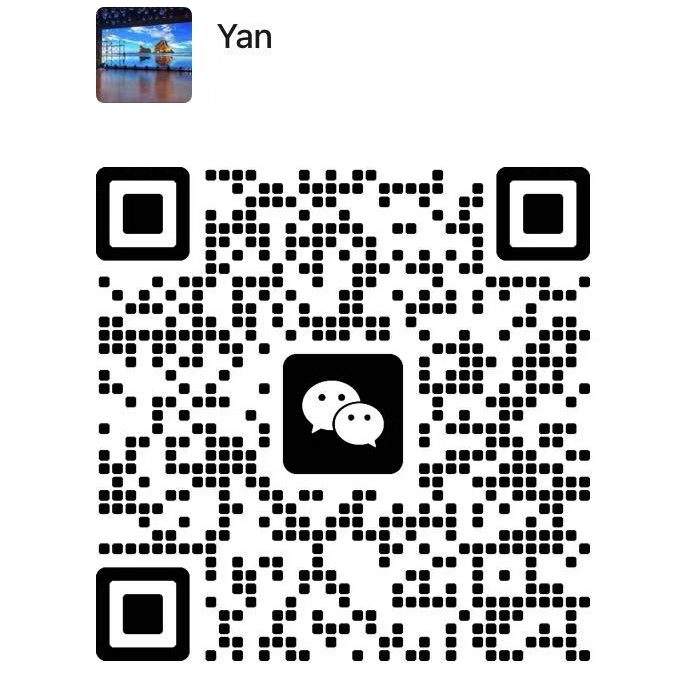Clarity and resolution of an LED display are affected by factors such as the usage environment, screen size, and viewing distance. Here is a guide to help you make a rational decision.
When buying LED displays you should know below questions:
Indoor or Outdoor: Determine if you need an indoor or outdoor display. Outdoor LED screens need waterproofing, while indoor LED screens do not have waterproofing.
To determine the size of your screen, measure the height and length.
Viewing distance: Measure how close and far you are to the screen.
These data will help you identify LED displays that are suitable. For example, If you want to install a full-color LED display in a hall for banquets, measure the distance between the installation point and the first row.
Related:
How to calculate the optimal viewing distance of LED display
What can be displayed on LED screens?
LED displays can display a variety of content including images, videos, and text. These screens are used for a variety of purposes, including television, advertising, and stage backdrops. The full-color LED displays are primarily used as large screens that can display images, audio files, video files, and live broadcasts using a video processor.
The principle of full-color LED screen playback
LED screens can play a variety of content including images, videos and text. Playback is controlled by synchronous or non-synchronous control systems. The majority of screens are controlled by synchronous systems involving receiving and sending cards. The receiving card is mounted on the rear of the screen. The sending card broadcasts content, while the receiving card displays it on the display screen.
Selecting LED Display Models:
When selecting a model, consider factors like usage, display ratios, content requirements and viewing distance. The following are key factors:
Pixel Pitch (P). In full-color LED displays, the P value represents the distance between two pixels. A smaller P value results in higher clarity and resolution but at a higher cost.
Pixel Density: Pixel density changes with P values. As an example, P3 is 111,111 pixels/square meter while P10 is 15,625 pixels/square meter.
Different P values can be used for viewing distances of different lengths. For example, P10 is appropriate for viewing beyond 10 meters.
Indoor LED Display Examples:
The P0.8, P0.9, P1, P1.25, P1.33, P1.5, P1.53, P1.667, P1.875, and P1.9 are models with small pixel pitches that are suitable for indoor applications.
The P2, P2.5, and P3 indoor LED display models are suitable for meeting rooms as well as exhibition halls and corridors. They provide better results at viewing distances exceeding 3 meters.
The P4 and P5 are commonly used in hotel banquet rooms and for large LED screens on temporary stages. It allows for easy transportation and assembly.
Quality and price considerations:
When buying LED displays, give priority to an LED display with stable and durable performance. Focusing on the lowest price may compromise quality.
Be cautious about products with significantly lower prices as this may be a sign of differences in the raw materials. Prices are transparent in the LED market. A reliable LED display manufacturer like GDHANHENG will ensure performance and durability.
The LED display resolution can be determined by the horizontal and the vertical pixel count. This represents the accuracy of the displayed images. It is the maximum number of pixels that a display will support.
The finer the image, the more pixels you have, the more content can be displayed on screen. The resolution is an important performance indicator that influences the clarity and depth of visuals.
Model is directly related with the resolution of an LED screen. As an indoor LED display example, some common models are P2, P3, P4, P5, P6, P8 and P10. The number after “P” is the pixel pitch in millimeters. The pixel pitch for P2 is 2mm and P3 3mm. The smaller the pixel pitch, the higher the pixel density and more LEDs. This results in a higher resolution.
The pixel technology (such as a P5 display with a 5mm pixel pitch), the screen brightness (measured as CD/m2) and the viewing distance are all factors that influence full-color LED display clarity. The final display quality is determined by the pixel pitch, while brightness requirements are dependent on use scenarios. For example, semi-outdoor and window applications require higher brightness.
Consider factors such as size, budget, installation requirements, and usage requirements when purchasing LED displays. In less demanding viewing conditions the difference between P2 and P2.5 models may not be apparent, but more expensive models are available.
Two scenarios are involved in the installation of full-color LED displays:
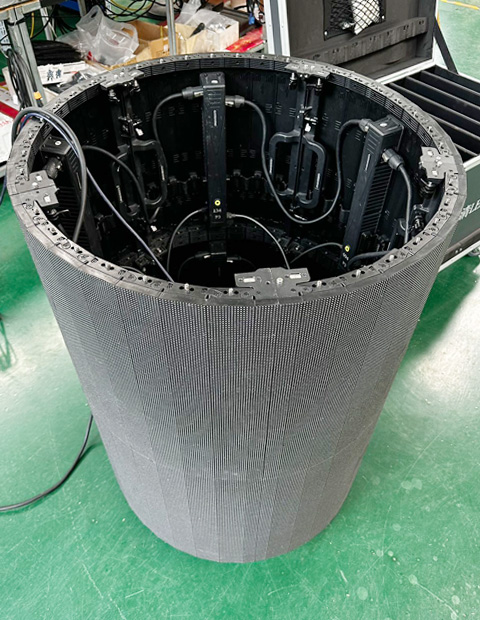
Manufacturer’s Responsibility:
Steel structure and manual assembly are the responsibility of the manufacturer.
In the contract with the manufacturer, labor and steel structure costs are included.
The installation is done by technicians of the manufacturer, who begin work as soon as the display arrives.
Installation includes mounting the screen and decorating the edges. It also involves ensuring that the screen is working properly.
Buyer’s Responsibility:
The steel structure and manual assembly are the responsibility of the buyer.
The manufacturer will provide CAD engineering drawings of the steel structure.
The buyer then arranges for local steel fabrication after receiving the display.
The buyer installs the display, but the manufacturer may provide technical assistance if problems arise.
Both cases are designed to ensure that the LED display is installed and functions according to the design specifications.
A full-color LED display screen is made up of many components. LED display screens can be divided into four main parts: LED screen body; control system; supporting devices and installation structures.
LED Display Screen: The LED screen body is the most important part of the project. It can range from 60 to 80 percent. The screen body’s quality is critical to the overall quality of LED display screens.
Display Screen Control System : The control system is responsible for the normal functioning of LED displays. This includes both synchronous and asynchronous systems.
LED Display Accessories: Other peripheral devices that can be used with LED displays are computers, distribution cabinets and audio amplifiers.
LED Display Fixed Structure: LED screens are available in a variety of configurations, including wall mounting, hanging or columns. Each installation requires a unique structural setup.
How do you calculate the price of full-color LED screens?
The price of LED displays is calculated by the size of the display. This quotation usually takes the form X/m2, with the unit price referring to the cost of the screen’s body, without taking into account the costs of other devices such as control systems, computers, or steel structures. Calculations for these additional components are based on specific dimensions and areas of the display.
Designing LED display screen size and specifications:
The sizes of LED displays can vary greatly, from large screens outdoors of several hundred square meters to smaller screens indoors of 3-4 sq. meters. Aspect ratios of 16:9 and 4:3 are usually recommended. The size and aspect ratio will depend on the space available at the installation site.
Front Desk Reception Full-Color LED Screen
Hotels are one of the many industries that use LED displays. The full-color LED screens in banquet rooms create an enchanting atmosphere. There are many options for full-color LED displays in banquet halls, depending on whether the screen is fixed or rented. The primary use of LED screens for banquet halls are for wedding backgrounds.
If the wedding LED screens are removable rental screens, it’s recommended that you use full-color P3.81 or P3.91 LED screens with sizes 500 mm*500 mm and 500 mm*1000 mm. These LED screens are very easy to set up and take down. You can select P3 or even P4 full-color LED screens if the screen will be fixed to the stage. Installation area can vary greatly depending on the size and shape of the banquet room. In small banquet rooms, screens may cover just 10 square meters. However, screens in larger banquet halls are often over 80 square meters.
LCD screens are used in the traditional security and surveillance industry. These screens can be 65 inches or 42 inches without being spliced into larger screens. In the early stages of LED display screens’ development, they lacked precision, and were unable to meet video surveillance requirements.
This is slowly changing, thanks to the advent of LED screens with small pitches. There are now ultra-high-definition screens with a pitch of 1.2mm and even some products with a pitch below 1mm. The P1 pitch is used to describe stable screens with small pitches, such as P1.53, P1.6 and P1.8. The traditional small-pitch LED screen is 400 mm*300 mm and has die-cast aluminum housing for ease of installation and maintenance. Small-pitch full-color LED screens are rapidly developing.
Prices will drop from the previous tens of thousands of yuan per square meter. Prices for LED screens like the P1.667 have dropped to more than ten thousand yuan a square meter. This was previously unimaginable. The prices of high-definition LED displays such as P3, P4, and P5 could eventually become obsolete due to the continued maturation of small-pitch technology and the decrease in raw material costs.
The education industry has kept up with the times in this multimedia age, as evidenced by the LED displays in large assembly halls and school auditoriums. The LED large screen in auditoriums can range between 30 and over 100 square meters, with the main models being P2, P2.5 P3, and P4.
The full-color LED screens are the perfect finishing touch for exhibition halls. Large LED screens are able to vividly display multimedia content such as images, videos, and text. This allows companies to showcase their core content. LED screens are available in P1.53, P1.86, and P2, with sizes determined by exhibition hall size. Display areas of 20-50 square meters are recommended.
Front desks are a vital part of any company or institution. Their importance is obvious. The reception hall can be used to effectively convey the first impressions of a business. The viewing distance of LED screens in the reception area is usually between 3-10 meters. The main screen models are P2.5 and P3, but the display is not very large. The main reason for this is the small space available at the reception desk. According to past installations, these LED screens typically cover an area of 8-15 square meters.
Conclusion:
GDHANHENG, a professional global New and Used LED Displays provider, is committed to innovation and quality, based on the needs of customers.
